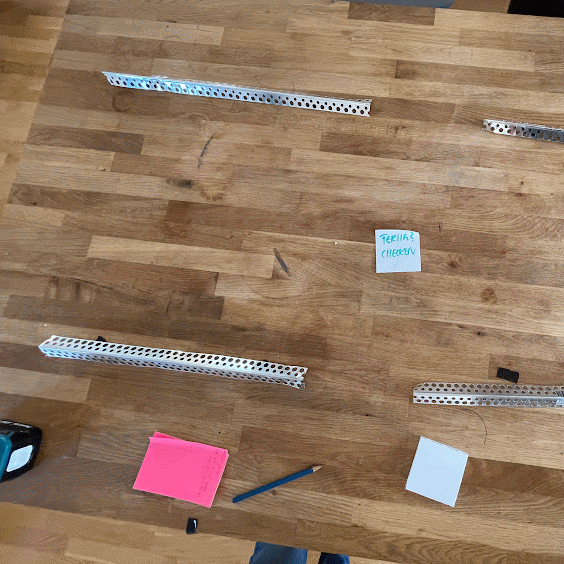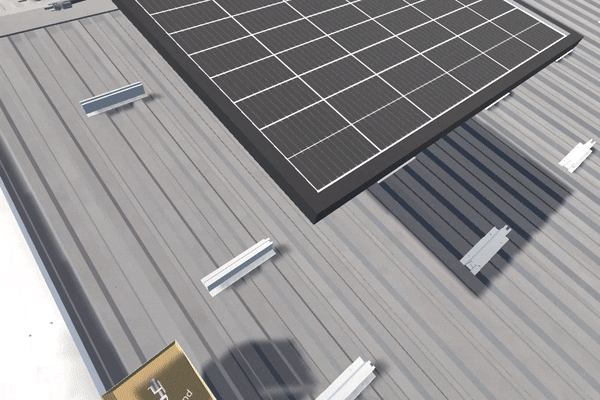The journey of the prototype development of the 'PV-Trainer'
- Maren Demant
- Jan 15
- 3 min read
The prototype of the PV-Trainer is a Virtual Reality training program that offers learners a realistic simulation of the steps involved in installing photovoltaic systems.
Content of the prototype
The trainer includes a tutorial on handling the necessary tools in the virtual space, as well as training on the installation of PV modules on a corrugated metal roof and connecting them to an inverter.

Goal
The goal of PV-Trainer is to reduce the cost of traditional training for PV installations, especially in areas where no real equipment or training on actual roofs is available. The application aims to provide training opportunities where on-site training is not feasible due to high costs or logistical constraints.
Realization
To achieve this, GIZ (Gesellschaft für Internationale Zusammenarbeit) financed the first and second stages of development of the trainer as part of continuing education projects in Turkey. The current version of the PV-Trainer was developed and tested in these projects and others, including with the AHK (German Chamber of Commerce) in Argentina. Partners in this collaboration included Invisible Room for software development, the Berlin Brandenburg Regional Association of the German Solar Energy Society (DGS) for content and technical details, and Whatpeak for course organization in Turkey and Germany, where the tool was tested. All three partners contributed to supporting the deployment.
The aim is to continuously expand the application through further projects and industry partners, adapting it to current conditions in each country of deployment.
Training Content
The PV-Trainer offers learners a realistic simulation of the steps required for PV system installation. By immersing themselves in a virtual environment, learners can practice:
Reading layout plans and measuring and marking on the roof
Assembling the substructure
Placing and wiring PV modules
Connecting strings to an inverter
Each step in the virtual course is accompanied by explanatory text, videos, and voice instructions. After each chapter, learners can assess their progress and analyze their mistakes. The PV-Trainer is available in German, English, and Spanish.
An interactive tutorial helps learners familiarize themselves with operating the VR headset and controls, ensuring a smooth start.
Development Process
During the concept development phase, DGS, Çataklı Enerji, and Invisible Room worked closely together, utilizing an agile Design Thinking methodology with phases of Understanding, Observing, Defining Perspectives, Prototyping, and Testing. Together, they discussed requirements and possibilities, analyzed specific aspects of PV systems, and established the concept for the prototype.
What stands out in this collaboration is the high motivation of the three partners and their ability to bring together their respective areas of expertise – photovoltaics technology, teaching, and software development – in an optimal way.
The learning and teaching processes were thoroughly discussed, and key training areas such as measuring, marking, and mounting module rails and solar panels were defined. Action flows were mapped out in flowcharts, task texts were developed in an agile manner, an anlouge prototype was ready for testing and a 3D scenario was created that included the basic logic and behavior of the tools.
From analouge prototyping to digital prototyping
Development Status
To create an effective training environment for photovoltaic installations, the Unity 3D development environment was selected in combination with the Oculus Quest Virtual Reality system.
The Oculus Quest headset offers a 6 DoF (Degrees of Freedom) experience without the need for a computer connection. This freedom of movement allows users to interact realistically and intuitively within the virtual environment. The headset is cost-effective, portable, and enables live streaming of the VR experience to smartphones and PCs.
The software was developed using the Unity 3D game engine, which allows for the creation of an immersive and interactive learning environment. 3D models were created with Blender to ensure realistic representations of the installation scenarios. Both human translators and AI-powered text-to-speech software were used for localization and voice output, ensuring user-friendliness and accessibility of the software.

The prototype and its purpose
It is important to emphasize that the PV-Trainer is still a prototype. The purpose of a prototype is to test and refine an idea before it becomes a fully realized product. This allows us to gather feedback from users and make improvements based on real-world application and experience. By testing the PV-Trainer in different countries and environments, we can continuously expand its features and tailor it to the needs of learners and professionals in the solar industry. Ultimately, this prototype will help shape the future of solar panel installation training, making it more accessible, efficient, and cost-effective.

